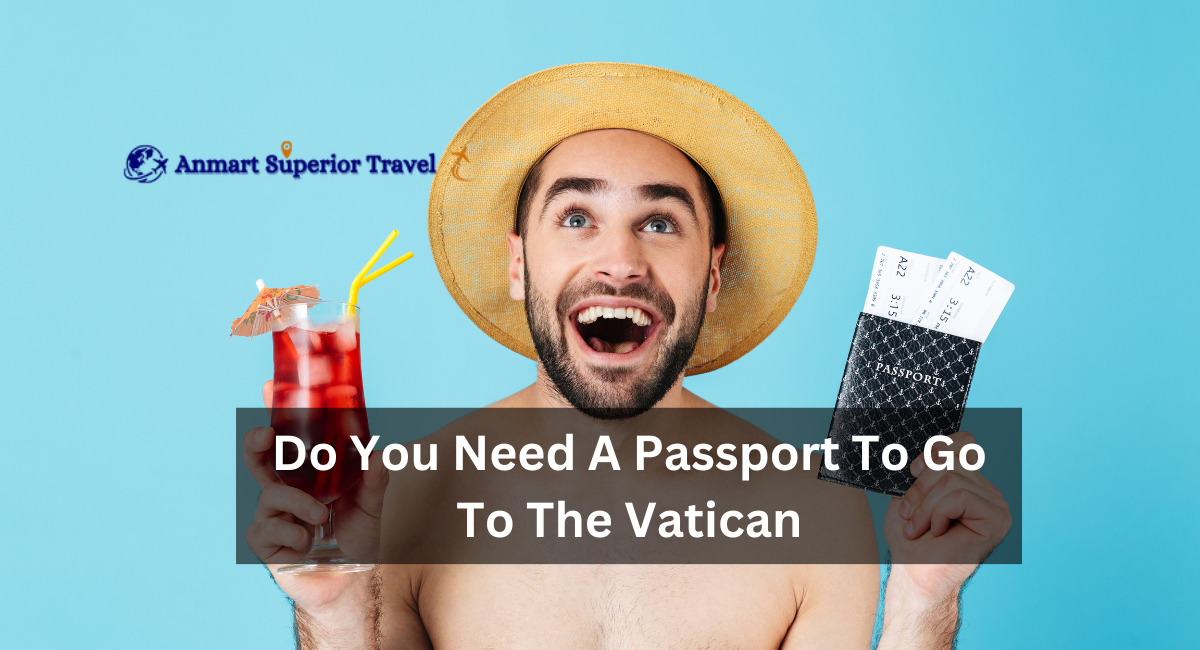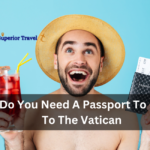Alternatively referred to as the Holy See, Vatican City is a sovereign city-state situated within the confines of Rome, Italy. It is widely recognized as the spiritual and administrative hub of the Roman Catholic Church and the place where the Pope resides.
The Vatican’s distinct status as an independent entity within Rome can cause travelers to need clarification regarding the necessity of a passport to enter.
Vatican City is an independent sovereign state; therefore, visitors must bring a valid passport. However, there is a substantial caveat: border control is frequently bypassed when entering Vatican City from Rome.
The border separating Italy and the Vatican is permeable, and most visitors do not undergo passport inspections. Passengers customarily traverse St. Peter’s Square or an alternative entrance without undergoing a passport inspection.
Do You Need A Passport To Go To The Vatican?
Many tourists organizing a trip to the Vatican ponder whether a passport is required to enter this historic and one-of-a-kind location. The Holy See, also known as Vatican City, is the most minor independent city-state in the world and is recognized as the administrative and spiritual hub of the Roman Catholic Church.
Because it is a sovereign entity within Rome, its entry requirements may need clarification. Therefore, is a passport required to enter the Vatican? Let us delve into this inquiry at length.
Comprehending Vatican City
Situated within the confines of Rome, Italy, Vatican City is a nuanced independent state. It is approximately 110 acres (44 hectares) in size and has its administration, legal system, and postal service.
Additionally, the Vatican harbors a collection of internationally renowned religious and cultural symbols, such as the Sistine Chapel, St. Peter’s Basilica, and the Vatican Museums.
The Vatican, being the domicile of the Pope in his capacity as the leader of the Roman Catholic Church, is a highly sought-after location for religious pilgrims and visitors alike.
Vatican City As An Independent State
The Vatican City functions as an independent sovereign state, frequently giving rise to ambiguity regarding entry prerequisites. Visiting the Vatican constitutes an international entry; therefore, it is prudent to bring a valid passport when embarking on international journeys. Nevertheless, in practice, the situation is more complex.
Border Crossing To The Vatican
The border separating Italy and the City of the Vatican is distinct from many traditional international borders. When traversing this border, visitors to the Vatican typically do not undergo formal immigration or passport inspections.
In contrast, visitors from Rome typically access the Vatican via St. Peter’s Square or one of the numerous alternative entrances, where the presence of immigration officers or passport control personnel is infrequent.
Identification Requirements
Although a passport is not an absolute prerequisite for entry into the Vatican, bringing appropriate identification with you on your visit is still recommended.
Passports are commonly utilized as identification by tourists and are widely recognized as valid documents within Vatican City. In most instances, alternative modes of identification, such as a national identification card, may be acceptable.
Bear In Mind The Following
- Altering Circumstances: Since security measures and entry procedures are subject to change, it is vital to remain current on the most recent requirements before your trip.
- Security Considerations: Although formal border checks are not in place, the Vatican maintains a strong security presence, particularly near prominent tourist destinations. Bag inspections, security screenings, and additional precautions will be implemented.
- Visa Prerequisites: Tourists are generally granted visa-free access to Vatican City, provided they adhere to the visa regulations of Italy, if applicable to their nationality.
- Religious Attire: Those who wish to visit sacred sites within the Vatican, including St. Peter’s Basilica, must wear appropriate attire. Shoulder, cleavage, and knee-exposing attire should be avoided, as it may lead to denial of entry.
Although it is recommended that visitors to Vatican City possess a passport, it is frequently unnecessary for those who have already arrived in Italy. Due to the porous nature of the frontier separating Italy and the Vatican, most visitors are not subject to formal passport control upon entry. However, it is always advisable to carry appropriate identification to guarantee a seamless and uncomplicated encounter.
15 Essential Pieces Of Information Before Visiting Vatican City
A visit to Vatican City, the administrative and spiritual hub of the Roman Catholic Church and the most minor independent city-state in the world, is an unforgettable and culturally enlightening experience. The following fifteen items should be on your mind before your journey to this historic location:
Despite its location within Rome, Italy, Vatican City maintains its independence as a sovereign city-state with its postal service, legal system, and government.
- Passport And Visa Prerequisites: While formal passport inspections are not routinely performed at the entrance to Vatican City from Italy, it is prudent to bring valid identification, including a passport or identification card. If required, ensure that you adhere to the visa regulations of Italy.
- Dress Code: It is imperative to comply with a rigorous dress code when visiting sacred locations in Vatican City, such as St. Peter’s Basilica and the Sistine Chapel. Shirts that expose the shoulders, cleavage, or ankles should be avoided.
- Opening Hours: Depending on the day and season, the opening hours of the Vatican Museums, St. Peter’s Basilica, and other attractions may vary.
- Guided Tours: For a more comprehensive understanding of the history and art of the Vatican, contemplate enrolling in a guided tour. Guides can provide context for the artworks and aid in navigating the crowds.
- Reserve Tickets In Advance: To avoid the lengthy lines that can form at the Vatican Museums, purchasing your tickets online in advance is prudent, as the premises can sometimes become highly crowded.
- Free Entry On Sundays: On the last Sunday of each month, admission to the Vatican Museums is complimentary; however, visitors should anticipate substantial throngs.
- Security Checks: Anticipate comprehensive security inspections upon entering the Vatican Museums and other significant locations. Plan to prevent lengthy wait times.
- Language: Particularly among tour guides, English is the predominant language in Vatican City; therefore, effective communication should not be difficult.
- Currency: Vatican Lire is the official currency of Vatican City; however, the Euro is extensively utilized in commercial transactions.
- Photography Rules: Although photography is generally permitted in the Vatican Museums, it is not in the Sistine Chapel. Ensure that you abide by these regulations.
- Sistine Chapel Silence: As a place of reflection and worship, individuals are requested to observe silence and abstain from speaking within the Sistine Chapel.
- St. Peter’s Dome Climb: Climbing to the summit of St. Peter’s Dome will provide you with panoramic views of Vatican City and Rome. Anticipate a challenging ascent.
- Papal Audience: To attain reservations for a Papal Audience featuring Pope Francis, it is advisable to consult the official website of the Vatican in advance and verify the schedule.
- Religious Services: Vatican City serves as a site of worship and a popular tourist destination. Observe religious services and activities occurring during your visit with due regard for their solemnity.
Your pleasure in perusing.










